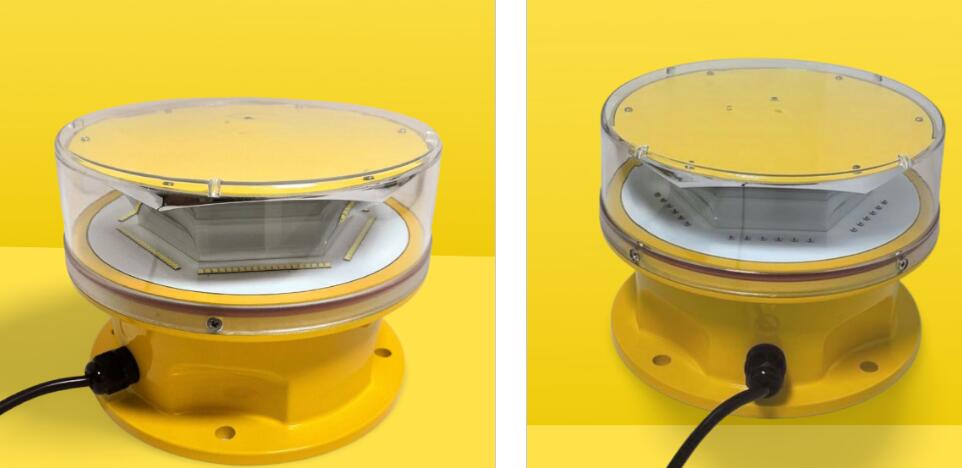The Unseen Guardians: How Obstacle Lights Enhance Aviation Safety
In the vast expanse of the modern world, where air travel connects continents in hours, a silent and often overlooked sentinel works tirelessly to ensure safety: the obstacle light. These unassuming beacons, mounted on structures ranging from skyscrapers to telecommunication towers, form a critical layer of the aviation safety ecosystem. They are not merely lights; they are a sophisticated language of visibility, designed to communicate danger and prevent catastrophe.
The primary function of an obstacle light is to mark structures that pose a potential hazard to aircraft, particularly during low-visibility conditions such as night, fog, or heavy rain. As aviation traffic density increases and urban landscapes reach ever skyward, the strategic placement of these lights becomes paramount. They transform static, hazardous obstacles into dynamic, recognizable points of reference for pilots, air traffic controllers, and even drone operators.

The technology behind obstacle lights is a fascinating study in precision and reliability. They are categorized by intensity, color, and flash pattern, each characteristic serving a specific purpose. Typically, two main types are employed in a complementary system. Red obstacle lights, which are either steady-burning or flashing, are used for lower-intensity requirements, often on structures of moderate height. For the tallest structures, like skyscrapers or wind turbines, high-intensity white strobe lights are deployed. These powerful flashes are impossible to miss, providing the highest level of warning from great distances. The combination of these lights on a single structure—with red lights at the lower levels and white strobes at the highest points—creates a definitive outline of the obstacle.
The engineering of these systems goes beyond simply installing a bulb. It involves rigorous photometric studies to ensure the light is visible from all approach angles without causing undue glare for nearby residents. Modern obstacle lights increasingly utilize LED technology, which offers significant advantages over traditional incandescent or xenon strobes. LEDs are incredibly energy-efficient, have a vastly longer lifespan, and provide superior reliability—a crucial factor for safety-critical applications. Their rapid switch-on time also makes them ideal for the precise flash sequences required by international aviation regulations.
| obstacle light |
Furthermore, the integration of monitoring and control systems has brought obstacle lighting into the digital age. Smart systems can now automatically self-diagnose failures, sending immediate alerts to maintenance teams if a light or a circuit malfunctions. This remote monitoring capability ensures that the integrity of the safety system is maintained around the clock, drastically reducing response times for repairs and enhancing overall reliability. In some advanced setups, these systems can even adjust light intensity based on ambient light conditions, improving efficiency and mitigating light pollution for surrounding communities.
The application of obstacle lights extends far beyond urban skylines. They are indispensable in the renewable energy sector, where they mark wind farm turbines that can reach astonishing heights. They are mounted on bridges, cranes, and even tall chimneys. In more remote or rugged terrain, they are often powered by solar panels and batteries, creating self-sustaining safety systems that operate independently of the main power grid. This demonstrates the adaptability and global importance of this technology.
Perhaps the most compelling aspect of obstacle lighting is its role in the future of mobility. With the advent of Urban Air Mobility (UAM) and the rapid expansion of commercial drone operations, the airspace in and around cities is set to become exponentially more crowded. Obstacle lighting will be a foundational technology for enabling this new era of flight. Drones and electric vertical take-off and landing (eVTOL) aircraft will rely on a network of illuminated structures for navigation and collision avoidance, making the precision and standardization of these systems more critical than ever.
| Revon lighting obstacle light |
In conclusion, obstacle lights are a perfect example of a simple concept executed with complex engineering to serve a vital purpose. They are the unseen guardians of the skies, a constant and reliable presence that allows the miracle of modern flight to occur safely millions of times a day. As we continue to build higher and fly more, the humble obstacle light will remain an indispensable, evolving, and brilliant symbol of safety in the sky. Their persistent glow and rhythmic flash are a silent promise, a guarantee that every possible measure is being taken to protect lives in the air and on the ground.
